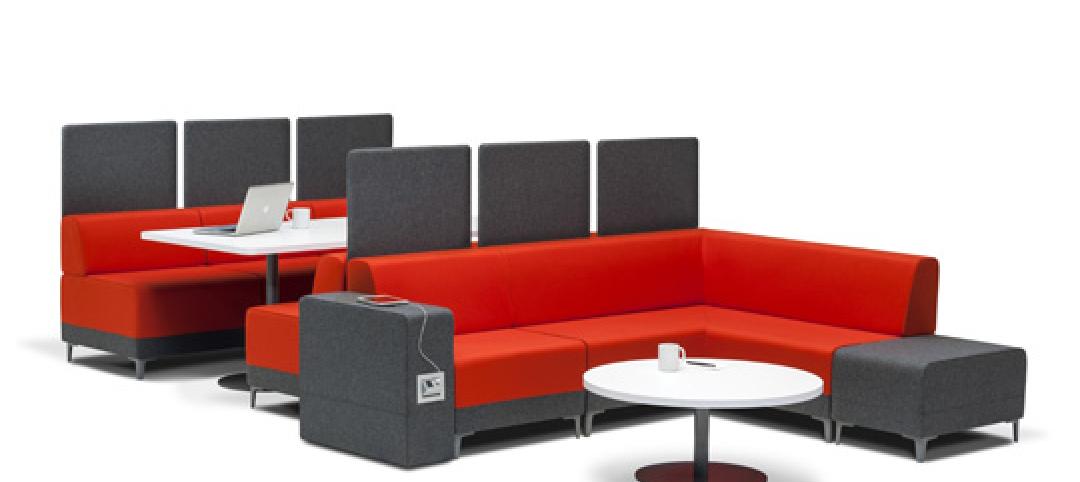AEC teams have found fertile ground in building or expanding consolidated rental car facilities, which are the No. 1 profit centers for most airports, according to Jayne O’Donnell, Turner Construction’s Vice President and General Manager.
Turner recently completed a five-story, 2.1-million-sf rental center located at the Port of Seattle that is designed to accommodate rental car demand for 45 million passengers per year. That’s 15 million more than Seattle-Tacoma International currently serves. The center has 88 acres for parking, as well as four Quick-Turn-Around areas for washing, cleaning, refueling, and maintenance.
Turner is currently working on a seven-story, $163 million rental-car facility in San Antonio, which would house up to 13 car rental companies and provide short-term public parking, replacing the airport’s 30-year-old hourly parking garage. Turner has also been awarded the contract for a rental-car project at the airport in Portland, Ore., which O’Donnell says is reviewing the possibility of including flow-through passenger ticketing at that site.
Austin Commercial is equally active on this front. Kelly Locke, LEED AP, Preconstruction Director for Austin’s National Aviation division, says that since 2000 his firm has been involved in eight rental car facility projects. It just got started on a 2.6-milllion-sf, $450 million consolidated rental car facility near the entrance to Tampa International Airport. This project is part of a $1 billion upgrade and modernization program the Florida airport is engaged in.
The goal of many of these projects, from the airports’ perspective, is to limit the number of vehicles that come to their terminals.
Austin Commercial broke ground May 21 on a $782 million rental car facility for Chicago’s O’Hare International. This facility is designed to bring every rental car under one roof and reduce traffic congestion on airport terminal roadways. The five-story center will include 4,200 spaces for rental cars and another 2,600 for public parking. When the facility is completed, in 2018, rental car companies won’t be allowed to run shuttle buses to the terminals. The U.S. Department of Transportation is providing a $288 million low-interest loan to the city for this project.
When interviewed in July, Locke said his firm was about to turn over car rental facilities to airports in Austin and San Diego. He added that airports in Orlando and Houston were getting ready to build new car rental areas. But the mother of them all could be LAX, which as part of a $4 billion modernization program will build a six-million-sf, $1 billion facility that consolidates into one location car rentals that are currently scattered around the Los Angeles airport.
This facility, which is scheduled to begin construction in 2017, is part of a larger plan that includes an automated train that takes passengers to and from an off-site check-in facility.
Related Stories
| Jul 2, 2014
Emerging trends in commercial flooring
Rectangular tiles, digital graphic applications, the resurgence of terrazzo, and product transparency headline today’s commercial flooring trends.
| Jun 30, 2014
Arup's vision of the future of rail: driverless trains, maintenance drones, and automatic freight delivery
In its Future of Rail 2050 report, Arup reveals a vision of the future of rail travel in light of trends such as urban population growth, climate change, and emerging technologies.
| Jun 18, 2014
Arup uses 3D printing to fabricate one-of-a-kind structural steel components
The firm's research shows that 3D printing has the potential to reduce costs, cut waste, and slash the carbon footprint of the construction sector.
| Jun 12, 2014
Austrian university develops 'inflatable' concrete dome method
Constructing a concrete dome is a costly process, but this may change soon. A team from the Vienna University of Technology has developed a method that allows concrete domes to form with the use of air and steel cables instead of expensive, timber supporting structures.
| Jun 2, 2014
Parking structures group launches LEED-type program for parking garages
The Green Parking Council, an affiliate of the International Parking Institute, has launched the Green Garage Certification program, the parking industry equivalent of LEED certification.
| May 29, 2014
7 cost-effective ways to make U.S. infrastructure more resilient
Moving critical elements to higher ground and designing for longer lifespans are just some of the ways cities and governments can make infrastructure more resilient to natural disasters and climate change, writes Richard Cavallaro, President of Skanska USA Civil.
| May 23, 2014
Top interior design trends: Gensler, HOK, FXFOWLE, Mancini Duffy weigh in
Tech-friendly furniture, “live walls,” sit-stand desks, and circadian lighting are among the emerging trends identified by leading interior designers.
| May 20, 2014
Kinetic Architecture: New book explores innovations in active façades
The book, co-authored by Arup's Russell Fortmeyer, illustrates the various ways architects, consultants, and engineers approach energy and comfort by manipulating air, water, and light through the layers of passive and active building envelope systems.
| May 19, 2014
What can architects learn from nature’s 3.8 billion years of experience?
In a new report, HOK and Biomimicry 3.8 partnered to study how lessons from the temperate broadleaf forest biome, which houses many of the world’s largest population centers, can inform the design of the built environment.
| May 13, 2014
19 industry groups team to promote resilient planning and building materials
The industry associations, with more than 700,000 members generating almost $1 trillion in GDP, have issued a joint statement on resilience, pushing design and building solutions for disaster mitigation.
















